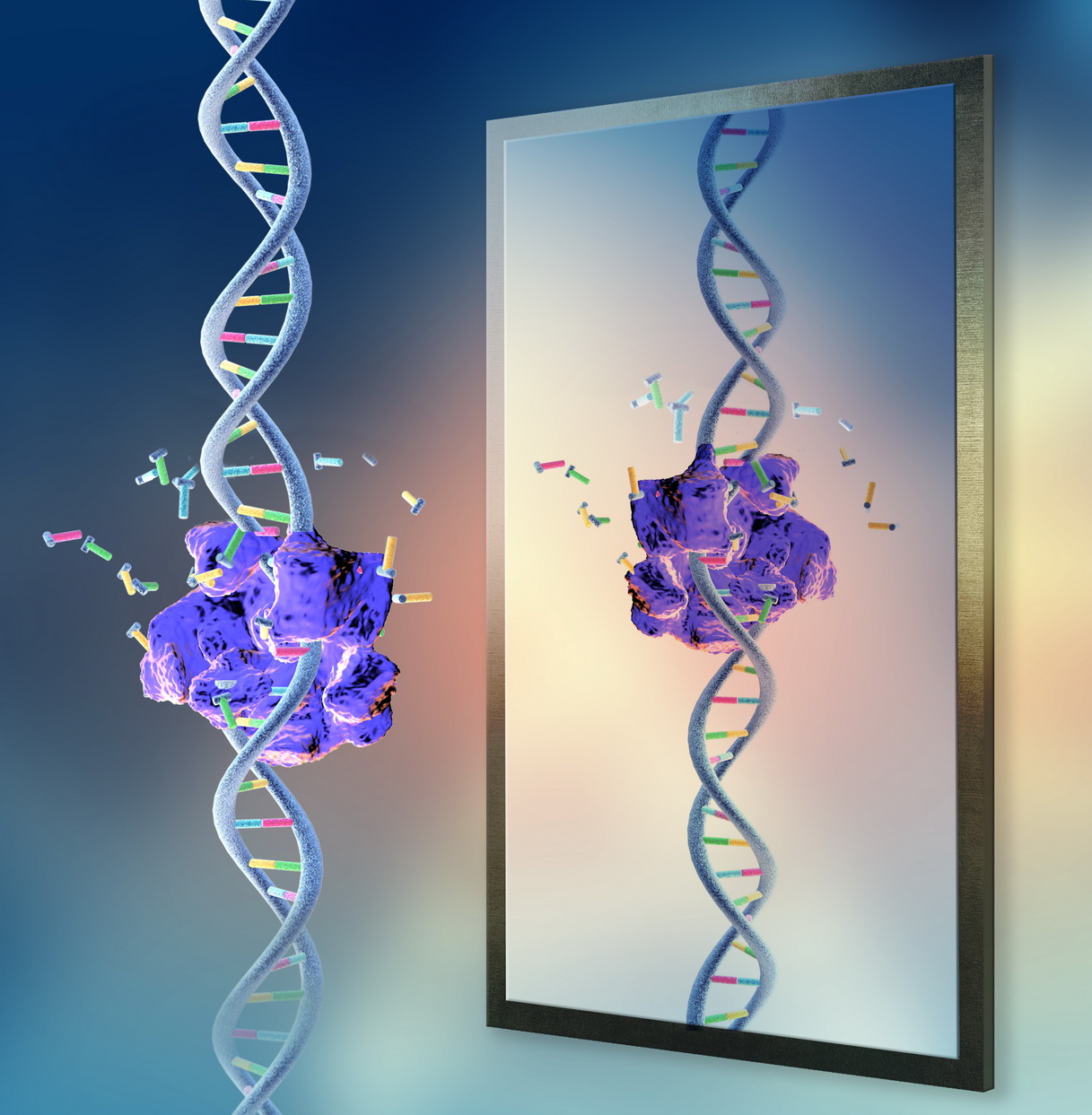The overwhelmingly homochiral nature of life has left a puzzle as to whether mirror-image molecular biology systems based on a chirally inverted version of molecular machinery could also exist. We reasoned that toward realizing mirror-image molecular biology systems, an imperative step is to establish a mirror-image version of the central dogma of molecular biology. We initially developed a proof-of-concept mirror-image genetic replication and transcription system based on a synthetic 174-aa mirror-image African swine fever virus polymerase X (ASFV pol X) (Wang et al., 2016), followed by a more efficient and thermostable 352-aa mirror-image Sulfolobus solfataricus P2 DNA polymerase IV (Dpo4) that led to the realization of mirror-image PCR (Xu et al., 2017, Jiang et al., 2017), gene transcription, reverse transcription, as well as mirror-image DNA and RNA sequencing (Liu and Zhu, 2018, Wang et al., 2019). Toward building a mirror-image ribosome, we realized the assembly of mirror-image 5S ribonucleoprotein complexes (Ling et al., 2020), protein translation without aminoacyl-tRNA synthetases, and ribozyme-catalyzed mirror-image tRNA charging (Chen et al., 2021). Next, we chemically synthesized a 90-kDa high-fidelity mirror-image Pfu DNA polymerase, enabling accurate assembly of a kilobase-long mirror-image gene and biostable storage of an entire paragraph of digital text in mirror-image DNA (Fan et al., 2021). We also developed a 'mirror-image selection' scheme for the directed evolution and selection of biostable L-DNA aptamers from large randomized L-DNA libraries (Chen et al., 2022). Recently, we chemically synthesized a 100-kDa mirror-image T7 RNA polymerase, enabling efficient and faithful transcription of the full-length mirror-image 5S, 16S, and 23S ribosomal RNAs that make up the structural and catalytic core and about 2/3 of the molecular mass of the mirror-image ribosome (Xu and Zhu, 2022). Our work is a small step toward realizing mirror-image molecular biology systems. It also highlights the potential to exploit mirror-image biomolecules as a unique class of therapeutic and informational tools (Zhu, 2025).
- Wang Z#, Xu W#, Liu L*, Zhu T*. A synthetic molecular system capable of mirror-image genetic replication and transcription. Nature Chemistry, 8:698-704, (2016). [PDF]
- Xu W#, Jiang W#, Wang J#, Yu L#, Chen J, Liu X, Liu L*, Zhu T*. Total chemical synthesis of a thermostable enzyme capable of polymerase chain reaction. Cell Discovery, 3:17008, (2017). [PDF]
- Jiang W#, Zhang B#, Fan C#, Wang M#, Wang J, Deng Q, Liu X, Chen J, Zheng J, Liu L*, Zhu T*. Mirror-image polymerase chain reaction. Cell Discovery, 3:17037, (2017). [PDF]
- Liu X, Zhu T*. Sequencing mirror-image DNA chemically. Cell Chemical Biology, 25:1151-1156, (2018). [PDF]
- Wang M#, Jiang W#, Liu X#, Wang J#, Zhang B, Fan C, Liu L, Pena-Alcantara G, Ling JJ, Chen J, Zhu T*. Mirror-image gene transcription and reverse transcription. Chem, 5:848-857, (2019). [PDF]
- Ling JJ#, Fan C#, Qin H, Wang M, Chen J, Wittung-Stafshede P, Zhu T*. Mirror-image 5S ribonucleoprotein complexes. Angewandte Chemie International Edition, 59:3724-3731, (2020). [PDF]
- Chen J, Chen M, Zhu T*. Translating protein enzymes without aminoacyl-tRNA synthetases. Chem, 7:786-798, (2021). [PDF]
- Fan C#, Deng Q#, Zhu T*. Bioorthogonal information storage in L-DNA with a high-fidelity mirror-image Pfu DNA polymerase. Nature Biotechnology, 39:1548-1555, (2021). [PDF]
- Chen J, Chen M, Zhu T*. Directed evolution and selection of biostable L-DNA aptamers with a mirror-image DNA polymerase. Nature Biotechnology, 40:1601-1609, (2022). [PDF]
- Xu Y, Zhu T*. Mirror-image T7 transcription of chirally inverted ribosomal and functional RNAs. Science, 378:405-412, (2022). [PDF]
- Zhang G, Zhu T*. Mirror-image trypsin digestion and sequencing of D-proteins. Nature Chemistry, 16:592-598, (2024). [PDF]
- Zhu T*. Mirror of the unknown: should research on mirror-image molecular biology be stopped? Nature, 645:588-591, (2025). [PDF]
*Corresponding author(s)
#Equal contributions
Interested students at Westlake University and postdoctoral candidates are welcome to contact Prof. Ting Zhu directly.
